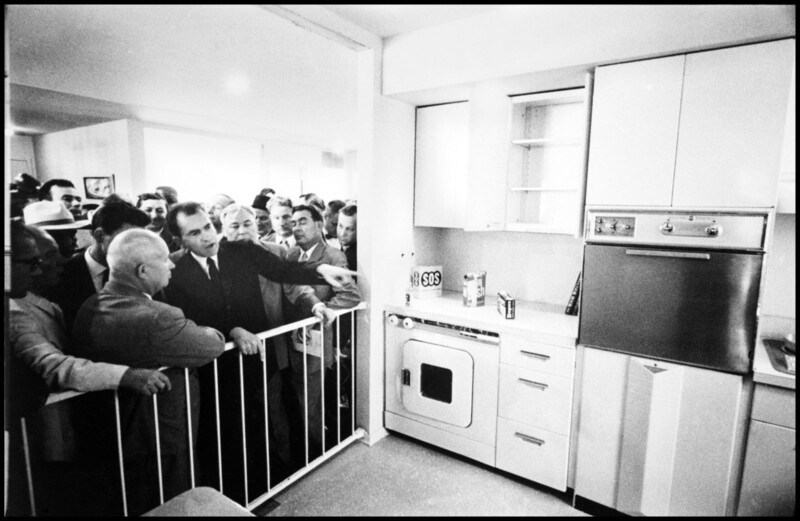American National Exhibit
In response to tensions about the restriction of cultural exchange by The Soviet Union and The United States. An agreement was reached to hold nationally funded educational and cultural exhibitions in Moscow and New York in the summer of 1959. The Soviet Union held an exhibition in New York, highlighting Soviet technological and scientific advances, including Sputnik, the first artificial Earth Satellite successfully launched in 1957. The U.S. held its American National Exhibit in Moscow displaying its greatest success against communism, the perfection of the ideal way of living through capitalist gain, centering on consumer goods.
During the exhibition, the interiors of American design became something that not only existed in the homes of middle-class white America, but a global spectacle. The U.S. ensured that the undercurrents of political ideology were under every choice of material displayed in the exhibition, with home interiors culminating as the physical manifestation of the success of the American standard of living.
The Kitchen Debate
Capitalist ideology and its opposition to that of Soviet socialism came to a head during the infamous impromptu Kitchen Debate between vice-president Richard Nixon and Nikita Khruschev, it was one of multiple debates by the two, but most infamous due to its setting inside the model kitchen of the replica home constructed for the exhibition and supplied with the latest home furnishings and appliances.
The debate touched on issues of labor, affordability for working class citizens, planned obsolescence, and the race for the advancement of design and technology.
Glimpses of the USA by Charles and Ray Eames
A notable piece of media on display at the exhibition that humanized American life and portrayed citizens as relatable people was a short film by influential architecture and furniture designers Charles and Ray Eames, commissioned by the U.S. Informational Agency, titled Glimpses of the U.S.A. depicting a day in the life of Americans.
The multi-screen film consisted of interwoven narratives of life in the US as both relatable to the beauty of human experiences and as evidence of societal achievement. The film depicts various aspects of domestic, suburban life, industry, market, and leisure.
The last image in the film featured forget-me-nots as a metaphor for shared sentiments and values of simple beauty because of its shared meaning of their name in both English and Russian.
The US's intent for showcasing the American way of living was to persuade Soviet citizens of the merits of American culture and the free-market system. One of the ways to do so was to convince citizens that it was achievable, that they too could live like this. The involvement of Charles and Ray Eames is also indicative of the say and influence of design of everyday life on a cultural and natonal scale.

